Crankbaits 101: Unlocking Bass Strikes
Introduction
Crankbaits are one of the most popular and effective lures for catching bass. They are designed to mimic the movements of natural prey fish, making them irresistible to hungry bass.
Crankbaits come in a variety of shapes, sizes, and colours, each with its unique characteristics that make them effective in different fishing situations. The effectiveness of crankbaits can be attributed to their ability to imitate baitfish.
Bass feed primarily on baitfish such as shad, bluegill, and minnows. By using crankbaits that mimic these prey species, anglers can trick bass into biting.
The realistic swimming action of crankbaits combined with their lifelike appearance makes them an irresistible target for hungry bass. Crankbaits have been used by anglers for many years and have evolved to become more effective at catching fish.
Early versions of crankbaits were made from wood and had limited swimming action. However, advancements in technology have led to the development of modern plastics and manufacturing techniques that allow for more lifelike movements and increased durability.
The History of Crankbaits
Crankbaits have been around for centuries, with early versions made from wood or bone being used by anglers as far back as ancient Egypt. These early designs were crude by today’s standards but were still effective at catching fish.
As technology improved, so did the design and construction of crankbaits. In the 1950s, Fred Arbogast revolutionized the industry with his introduction of the Jitterbug lure – a topwater plug that created a loud commotion on retrieval.
This marked a turning point in lure design as manufacturers began experimenting with new materials like plastic that allowed for more intricate designs. By the 1970s, Rapala had introduced the Shad Rap, a lure that was specifically designed to mimic the movements of a shad.
This innovation marked a new era in crankbait fishing as anglers realized the effectiveness of using lures that imitated natural prey species. Today, crankbaits come in a wide variety of shapes and sizes, each designed to target specific types of fish or fishing conditions.
From shallow-diving square bills to deep-diving lipless baits, there’s a crankbait for every situation. With so many different options available, it’s important to understand the different types of crankbaits and when to use them.
Types of Crankbaits
Crankbaits come in a variety of shapes, sizes, and diving depths. Understanding the different types can help you choose the right lure for the conditions at hand.
Generally, crankbaits can be categorized as either lipless or lipped. Lipless crankbaits have a thin profile with no diving lip and tend to vibrate more intensely on retrieve.
They are ideal for fishing in shallow water or around vegetation. Lipped crankbaits, on the other hand, have a designed lip that determines their diving depth and swimming action.
Diving Depth and How It Affects Lure Selection
One important aspect of choosing a lipped crankbait is selecting one that will dive to the appropriate depth for your desired fishing location. Square bill crankbaits generally have a wider wobble and dive shallow, making them great for fishing around cover like logs or rocks near shorelines.
Round bill crankbaits have a tighter wobble and dive deeper, making them ideal for targeting fish in deeper water or open waters with less cover. Flat-sided crankbaits are designed to mimic baitfish that swim with an erratic darting motion from side to side and are best used when targeting fish that are feeding on smaller baitfish in clear water conditions.
Lipless Vs Lipped Crankbaits
Lipless crankbaits can be used effectively in both shallow and deep waters since they don’t have any diving lips limiting their depth range. They are most effective when retrieved quickly so they create vibrations that attract nearby bass from long distances.
Lipped crankbaits require much more precise selection due to their varying designs such as square bill (shallow), round bill (medium-depth), or deep-diving models. Regardless of their design, each model has its unique vibration pattern which sends signals to the bass that are hiding in cover.
Floating Vs Sinking Crankbaits
Another aspect of choosing a crankbait is whether it floats or sinks. Floating crankbaits have a buoyant internal structure and will stay at or near the surface unless retrieved quickly.
They are great for fishing in shallow water or around surface vegetation like lily pads. Sinking crankbaits, on the other hand, will sink slowly to various depths depending on their weight and design.
They can be used to target fish at different depths and are particularly effective when fished around drop-offs, submerged trees, or other types of cover where fish may be hiding. It’s important to choose a sinking crankbait with an appropriate rate of fall that matches your desired fishing location and target species.
Colour Selection:
Crankbait fishing is all about fooling the fish into thinking that the lure is a real prey fish. One of the most critical factors in this deception is choosing a colour that will trigger the bass’s predatory instinct.
The right colour can make all the difference in whether or not you are successful on any given day. While there is no exact science to choosing colours, there are some basic principles that every angler should know.
Importance of colour in attracting fish
Colour is essential because it determines how visible your bait will be to the bass. Certain colours work better under specific lighting conditions, so it’s essential to choose a shade that matches the water’s light level and clarity.
When fishing in clear water, natural colours such as greens, browns, and silvers work well. In murky or stained water where visibility is low, brighter colours such as chartreuse and firetiger can help attract more attention.
Different types of baitfish have unique colour patterns depending on their environment and habitat. By understanding what prey fish live in your area and how they look, you can choose lures with similar patterns to match their appearance.
Natural vs bright colours
Natural-coloured baits tend to work best when fishing for pressured or wary fish because they blend into their surroundings well. They also tend to imitate natural forage that bass often feed on, such as shad or minnows. On the other hand, bright-coloured lures like hot pink or neon orange may seem unnatural but can still be effective if used in low-visibility conditions.
One thing to keep in mind when selecting bright crankbaits is that they may attract smaller bass due to their flashy appearance. However, using them sparingly can be helpful when looking for reaction bites from larger fish under low-light conditions like early morning or late afternoon.
Matching the hatch: selecting colours based on the prey fish in the area
Matching the hatch is a well-known principle in fly fishing, but it also translates to crankbait fishing. Essentially, it means matching your lure’s colour and size to what the bass are already eating.
When fishing for bass that are targeting shad or other baitfish, select a crankbait that imitates their size and colour pattern. If you’re unsure of what prey species live in your area, try using natural-coloured lures until you get a feel for what works best.
Once you do catch a fish and can identify its stomach contents, use that information to tailor your bait selection further. Selecting the right colour crankbait is crucial when targeting bass with these lures.
Factors like water clarity, light conditions, and natural prey patterns should all be considered when choosing which shades to use. Keep experimenting until you find which colours work best for you in different situations – it will pay off in more successful fishing trips!
Retrieval Techniques
Crankbaits are versatile lures that can be retrieved in various ways to trigger strikes from bass. The two main retrieval techniques are steady retrieve and stop-and-go retrieve.
The steady retrieve is a simple, continuous reel-in motion that mimics the swimming action of baitfish. It’s an effective technique for covering a lot of water quickly and locating active fish.
However, it can also be monotonous for the fish and may not always trigger a strike. The stop-and-go retrieve involves periodically pausing the lure during the retrieval process to mimic an injured or stunned baitfish.
This technique can create a more natural presentation that entices finicky fish into biting. Try varying the length of pauses and speeds of retrieves to find what works best for the conditions you’re fishing in.
Twitching, Jerking, and Pausing Techniques to Trigger Strikes
To add even more complexity to your retrieves, try incorporating twitching, jerking, and pausing techniques into your crankbait fishing arsenal. Twitching involves quickly jerking your rod tip up or down while reeling in your crankbait to produce an erratic swimming action that imitates fleeing baitfish. Jerking is similar but involves larger, more pronounced rod movements with longer pauses between each movement.
Pausing involves stopping your crankbait completely during retrieval before resuming reeling it in after several seconds have passed by twitching or jerking again. These techniques can be particularly useful when targeting inactive fish or those that seem uninterested in conventional steady retrieves.
Using a “Crank-and-Pause” Technique to Mimic Injured Baitfish
Another popular technique is the “crank-and-pause” method where you alternate between cranking your lure at regular intervals and then abruptly stopping it before continuing again with another crank cycle. This technique mimics an injured baitfish and can be effective in enticing nearby bass to strike. Keep in mind that you should experiment with different retrieval techniques to find what works best for the conditions you are fishing in.
Factors such as water temperature, clarity, and the bass’s mood can play a significant role in determining which technique will be most effective. Be patient, persistent, and willing to try new things until you find what works.
Gear for Crankbait Fishing
Rod Length, Power, and Action for Optimal Performance with Crankbaits
When it comes to selecting the right rod for crankbait fishing, there are a few things to consider. First, you’ll want the right length. A longer rod is better for making longer casts and fighting bigger fish, whereas a shorter rod gives you more control and precision when casting in tight spaces.
In general, a 6-7 foot medium-heavy power rod with a moderate-fast action is ideal for most crankbait fishing. Next up is power.
This refers to how much weight the rod can handle and how strong it is overall. For most crankbait fishing scenarios, you’ll want a medium-heavy or heavy power rating on your rod so you can handle bigger fish without snapping your line or damaging your gear.
Consider the action of your rod – that is, how flexible it is from top to bottom. A moderate-fast action provides enough flexibility in the tip of the rod to feel subtle bites while still having enough backbone to set the hook and reel in those big catches.
Reel Gear Ratio for Different Types of Crankbait Fishing
The gear ratio on your reel determines how quickly it retrieves line per turn of the handle. High gear ratios like 7:1 or 8:1 allow you to retrieve lures quickly and are great when covering large areas of water.
However, they aren’t ideal for crankbaits because they can cause the lure to move too quickly through the water column. For optimal performance with crankbaits, look for a reel with a lower gear ratio like 5:1 or 6:1.
This slower retrieve speed allows your lure to stay in the strike zone longer and gives fish more time to attack before they lose interest.
Line Selection:
Fluorocarbon vs. Monofilament.
When it comes to selecting the right line for crankbait fishing, there are two main options: fluorocarbon and monofilament.
Fluorocarbon has become increasingly popular in recent years because of its low visibility in the water and high sensitivity, meaning you can feel even the slightest bites on your line. It’s also highly abrasion-resistant, making it less likely to break off when fighting big fish.
On the other hand, monofilament is still a great choice for crankbait fishing because of its stretchiness and forgiving nature. This is especially important when using treble hooks with crankbaits, which can easily tear out if too much pressure is applied.
When selecting between fluorocarbon and monofilament, consider the water clarity – if it’s clear or heavily pressured water fluorocarbon should be your go-to as it provides lower visibility in these conditions.
However, if you’re fishing in murky waters or areas with a lot of debris or cover that could cause line breakage, a good-quality monofilament might be your best bet.
Overall, selecting the right gear is critical to successful crankbait fishing.
By choosing the ideal rod length, power and action for optimal performance with crankbaits; selecting reel gear ratio depending on different types of crankbait fishing; and choosing between fluorocarbon or monofilament based on water condition – you’ll give yourself an edge when it comes to catching those elusive bass strikes!
Location and Conditions for Crankbait Fishing
Water Temperature Preferences for Different Types of Bass Species
When it comes to fishing with crankbaits, the water temperature is an important element in determining where fish will be located. For example, largemouth bass tends to prefer warmer water temperatures, generally ranging from 65-75°F.
Smallmouth bass, on the other hand, thrives in cooler temperatures ranging from 60-70°F. Knowing the preferred water temperature of your targeted species can help you target them more effectively.
Water Clarity and Depth Preferences for Different Types of Bass Species
Water clarity and depth also play a significant role in crankbait fishing success. In clear water conditions, naturally coloured crankbaits can be effective as they mimic the baitfish that live in those waters.
In murky or stained waters, brighter colours such as chartreuse or orange can create better contrast and increase visibility for fish. Additionally, knowing the depth preferences of different types of bass species is important in selecting the correct diving depth lure.
Largemouth bass tend to relate to structures such as weed beds or sunken logs in shallower waters while smallmouth bass are often found near rocky structures or drop-offs at deeper depths. Paying attention to these location cues can increase your chances of a successful catch.
Conclusion
Fishing with crankbaits requires knowledge of several factors including gear selection, colour choice and retrieval techniques but equally importantly where you choose to fish them along with the weather and environmental conditions can make all the difference between a successful day on the water versus one that falls short. By understanding things like where particular types of species prefer to spend their time based upon various factors like temperature ranges or preferred feeding environments combined with other important considerations such as using different styles (diving vs lipless) based upon the location and water conditions you will be well on your way to unlocking a world of successful crankbait fishing.

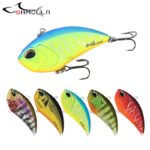
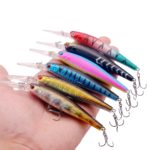
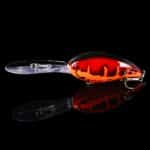
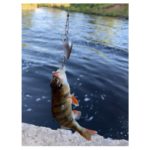
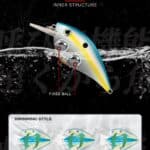
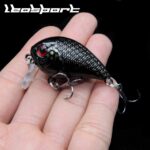
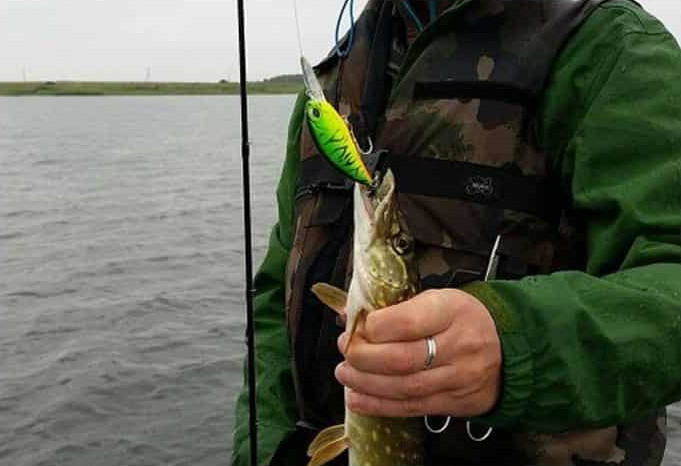


Leave a comment